It has been some time since we have done an embedded motherboard review. Since we had one cycle through the lab due to a new rack we are provisioning, we had the chance to take a look at the Supermicro X11SDV-4C-TP8F which is an Intel Xeon D-2123IT motherboard with a lot of networking onboard.
Note: This is a review that was apparently written many months ago about a motherboard in the E300D-4C-4CN8TP system. It got caught just before some big launches, so it never went live. At the same time, this is a motherboard we probably have in 8-10 systems at this point, so we figured we may as well publish the review before we get into our Ice Lake-D (Xeon D-1700 and Xeon D-2700 review series.)
Supermicro X11SDV-4C-TP8F Overview
The Supermicro X11SDV-4C-TP8F may seem a bit of an unusual size. It is a Flex ATX motherboard which is 9″ x 7.25″ whereas a standard mITX motherboard is 6.7″ x 6.7″ and a mATX motherboard would be 9.6″ x 9.6″.
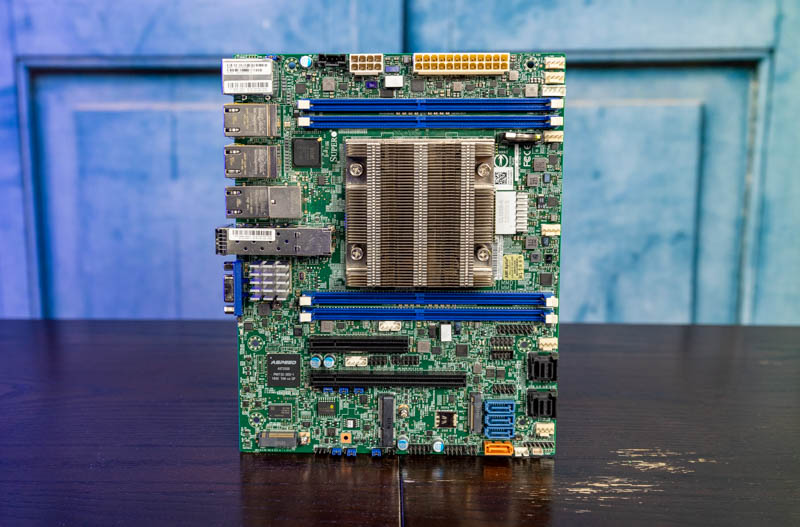
The reason for this size is very interesting. It turns out that this platform fits well in both the Supermicro 1U short-depth platforms like the Supermicro CSE-505-203B but also the embedded chassis like the CSE-E300. Supermicro has servers, the 5019D-4C-FN8TP and the E300-9D-4CN8TP we reviewed that utilize this motherboard in both of those cases.
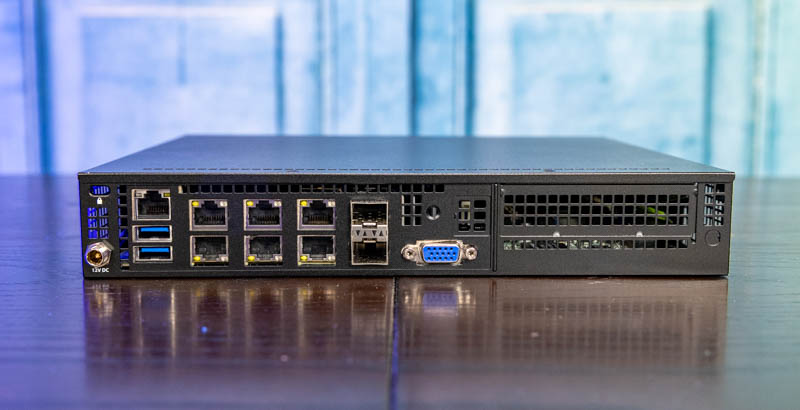
Onboard we have an Intel Xeon D-2123IT. This is a 4 core/ 8 thread SoC that operates at up to 60W TDP. One item we should note is that these CPUs generally use more power than the Xeon D-1500 processors, but they have a very nice feature. The cores are Skylake like the first generation Intel Xeon Scalable parts, and the I/O is effectively handled by the same IP found in the Lewisburg PCH found on first and second-generation Intel Xeon Scalable systems. Given this is effectively the mainstream platform for Intel from 2017 to 2021 (and the Lewisburg Refresh for the Cooper/ Ice platform has some of the same IP) that means this platform has excellent software support at this point.
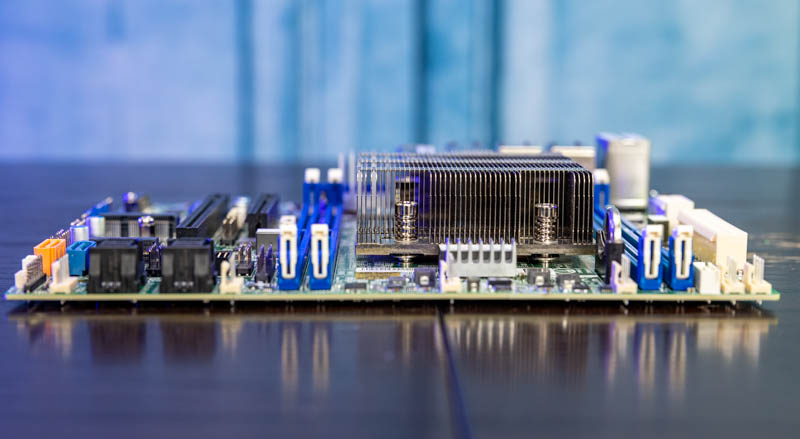
Flanking the Xeon D-2123IT we have four DDR4 DIMM slots. This memory operates at up to DDR4-2133/2400 speeds and one can populate up to 4x 128GB LRDIMMs in the platform for 512GB of memory. This also means we get more memory bandwidth and more memory bandwidth per core than the dual-channel 4-core AMD EPYC 3000 parts such as the AMD EPYC 3151.
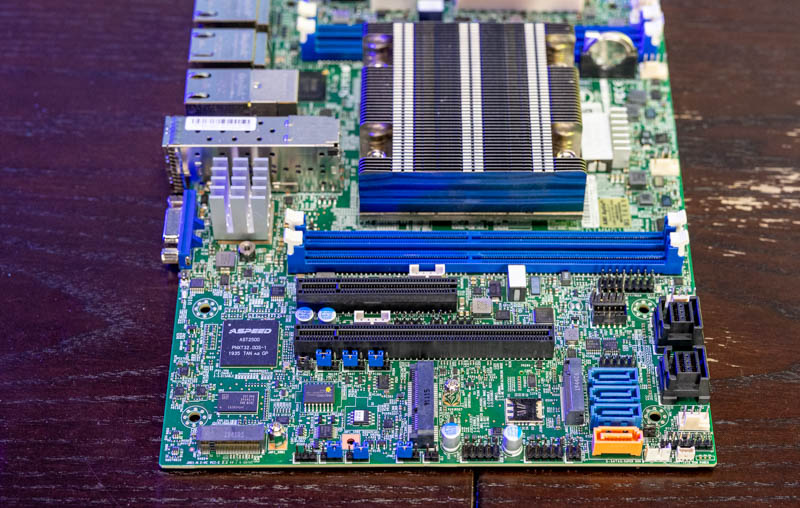
In terms of expansion, this motherboard is quite interesting due to the Flex ATX size which offers more room than the mITX platforms like the Supermicro X11SDV-4C-TLN2F we reviewed with this same chip. We get a PCIe 3.0 x16 and x8 slot for standard expansion slots. That is not all though. We also get a mPCIe slot, a M.2 2280 (PCIe 3.0 x4), and a M.2 B-key slot for wireless WAN connectivity. There is even a SIM card slot under the B-Key 3042 slot.
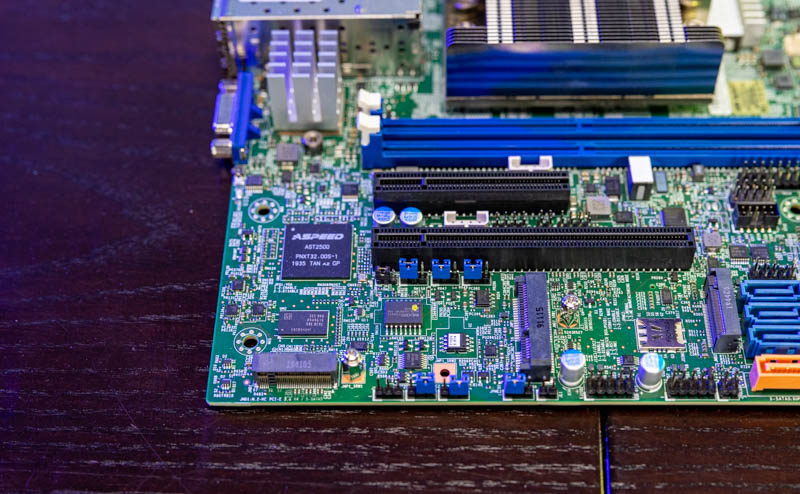
For SATA SSD connectivity, one has four onboard standard 7-pin SATA ports.
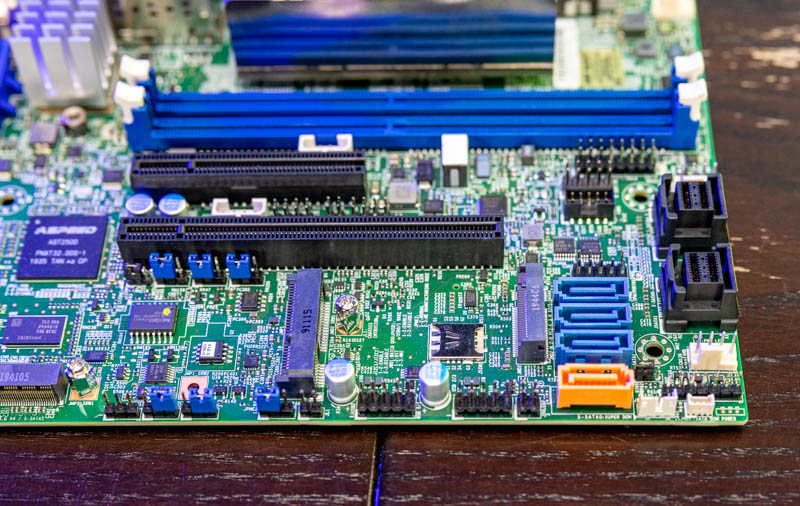
It also has two high-density ports which can each break out into four additional SATA ports for twelve total.
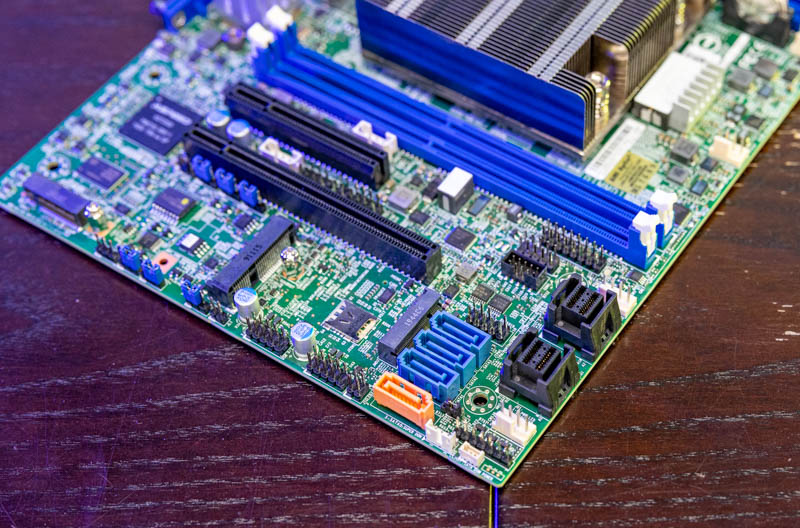
The interesting connectivity does not end there. One also gets a plentiful I/O panel. As we would expect there are legacy VGA ports, two USB 3.0 ports, and a RJ45 port for the out-of-band AST2500 management.
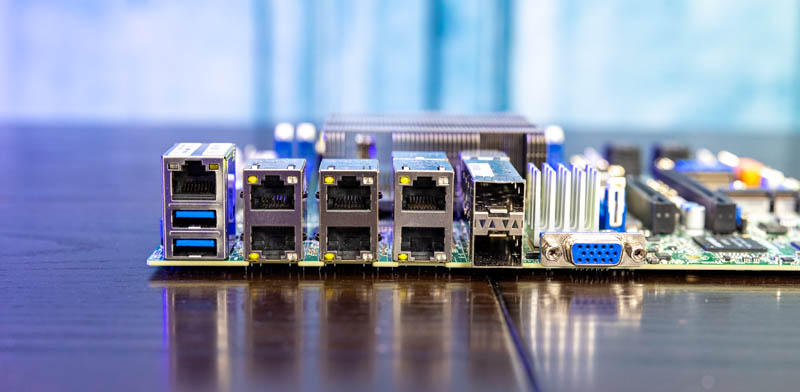
Networking goes well beyond this one gets four 1GbE ports powered by an Intel i350-am4 controller.
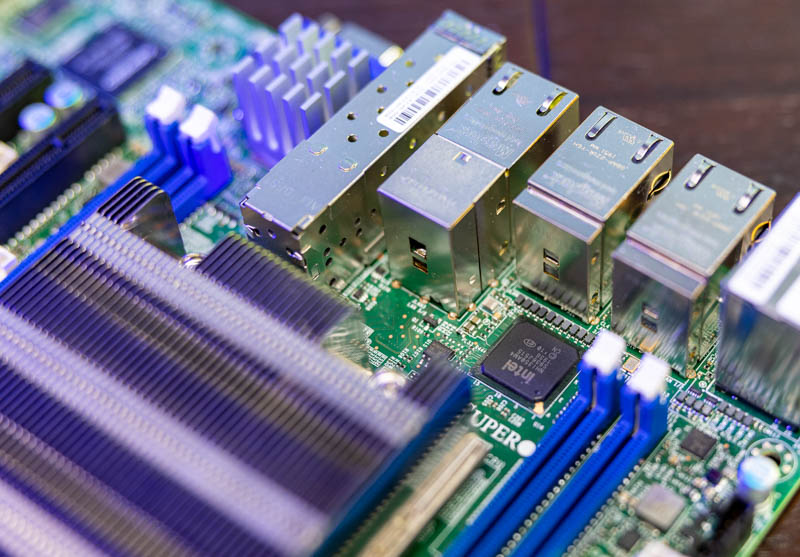
The 10Gbase-T ports are powered via an Intel X557 NIC. The dual SFP+ 10GbE ports are powered by the Intel Xeon D-2123IT. That is a lot of connectivity options in a small package.
Next, we are going to look at the topology, management, and performance.

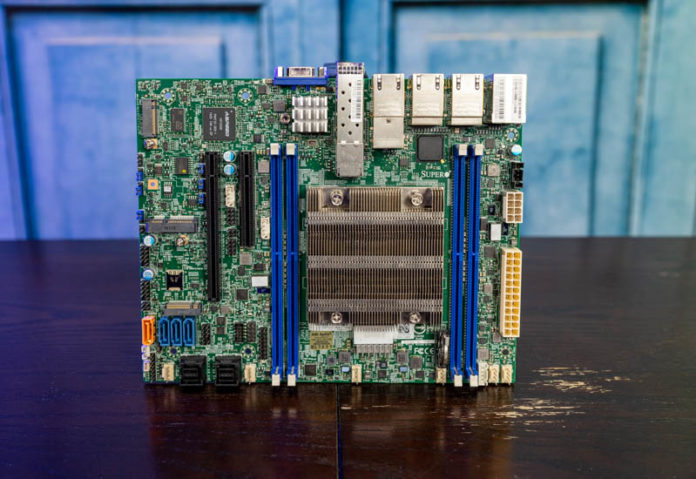



“The power supply does not have a fan so it is relatively quiet.” Below a picture of a power supply with a fan in it.
When can we expect to see the Ice Lake-D hit the market and see a review?
FYI, I believe this particular 4 core version runs DDR4 up to 2400 instead of 2133 as stated in the article. You can see this in the manual and I also personally run this board with DDR4 2400.
@james, i believe they were referring to the chassis with the pico-psu in it, which does NOT have a fan, but you’re right it’s confusing since they show 2 different chassis.